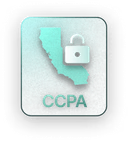Blog
Resource library
Expert insights, industry trends, and technology breakthroughs in healthcare and analytics.

From Notes to Codes: A Simple Walkthrough of Diagnostic Code Mapping with Bioteknika
This blog explores Bioteknika’s diagnostic code mapping interface, which uses a hybrid AI approach to suggest ICD-10 codes based on confidence scoring. Includes real input/output examples and a breakdown of both upload-based and manual entry workflows.
Read post

7 Key Insights on Bridging Patient Registries with EHR Systems
Successful integration creates space: for faster decisions, more coordinated care, and fewer manual handoffs. It also reduces risk-not just clinically, but operationally. As patient data becomes more complex and privacy rules tighten, a reliable bridge between registries and EHRs isn't just helpful; it's foundational. The question isn't whether systems should connect. It's whether your connection truly works for the people using it every day. If not, it's time to build a smarter bridge-one that brings information closer to action.
Read post

Choosing the Right Patient Registry: 5 Questions Every Healthcare Leader Should Ask
A patient registry isn’t just a software decision—it’s a clinical, operational, and strategic one. The right system improves care, simplifies reporting, and builds a solid foundation for growth and research.
So don’t just ask what it can do. Ask how it will work for you. The best solutions aren’t always the flashiest—they’re the ones that quietly fit, adapt, and support your goals every step of the way.
Read post

Top 10 Must-Have Features in Patient Registry Software
A modern patient registry platform should quietly support the work that clinicians and administrators do every day. It shouldn’t demand attention—it should provide clarity, security, and structure, allowing the focus to remain on patients and outcomes. These ten features are not bells and whistles—they’re the practical foundation for any serious healthcare system looking to do its work better.
Read post

How Does a Healthcare Data Warehouse Support Population Health Management?
In the modern healthcare landscape, the concept of population health management (PHM) has risen to prominence as a way to improve patient outcomes while managing costs. But addressing the health needs of an entire population is no small feat.
Read post

5 Key Steps to Developing a Robust Healthcare Data Security Strategy
How healthcare organizations can build a secure data ecosystem to safeguard sensitive information, learning lessons from high-profile breaches and understanding how to move forward with resilience and innovation.
Read post

The Domino Effect of Non-Compliance: Data Warehousing’s Role in Avoiding Regulatory Pitfalls
How a robust healthcare data warehouse can be a game-changer in navigating the labyrinth of regulations while fostering trust and operational excellence.
Read post

Top 8 Must-Have Features in Healthcare Data Warehousing Solutions
Key features to prioritize include scalability to grow with your organization, interoperability for seamless data exchange, security and compliance to protect sensitive patient information, and advanced analytics to derive actionable insights.
Read post

What Are the Key Challenges in Implementing a Healthcare Data Warehouse?
The healthcare industry is at the forefront of innovation, constantly seeking ways to improve patient care and streamline operations. In this context, data warehouses have emerged as essential tools for harnessing the power of data. They provide healthcare organizations with the ability to aggregate and analyze information from multiple sources, offering insights that can transform decision-making.
Read post

Top 10 Strategies for Safeguarding Data in Healthcare Data Warehouses
Healthcare data is among the most sensitive and sought-after information in today’s digital age. It contains deeply personal details—medical histories, treatments, billing data, and more. For hackers, it’s a goldmine; for patients, it’s their privacy and trust on the line. With healthcare organizations increasingly relying on data warehouses to consolidate, manage, and analyze this critical information, the stakes have never been higher. But how do we address the ever-growing threat of security breaches in these data warehouses?
Read post

From ICD-10 to ICD-11: What Healthcare Leaders Need to Know
Medical coding. It’s not a flashy subject, but it underpins every aspect of your healthcare system—from patient care and analytics to billing and compliance. For decades, ICD-10 has been the gold standard for coding. But today, healthcare leaders are beginning to ask, Is ICD-11 the step we need to take to future-proof our systems? In this blog, we’ll explore what ICD-11 brings to the table, why countries are adopting it, and how healthcare organizations can prepare for the transition. This isn’t just about compliance—it’s about staying relevant, efficient, and ready for the future.
Read post





